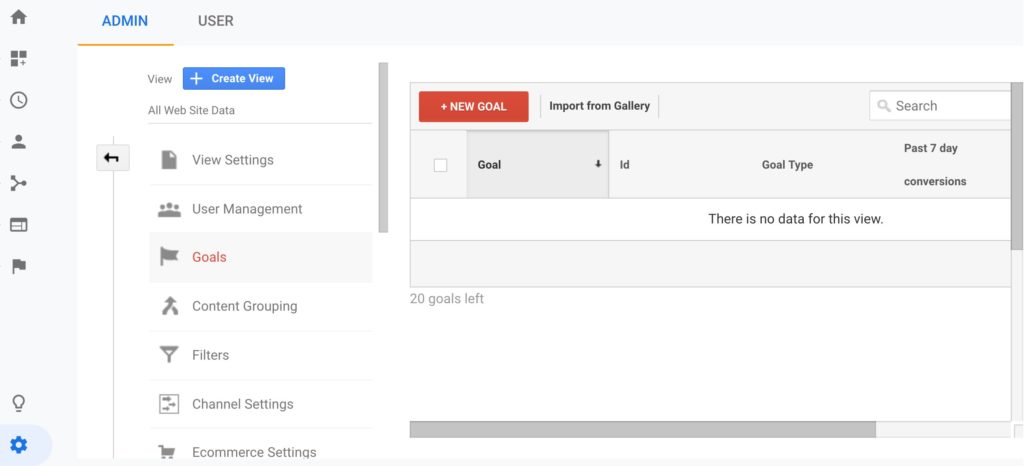What Data Is Google Analytics Goals Unable to Track: A Total Guide
What Data Is Google Analytics Goals Unable to Track: A Total Guide
Blog Article
Discover the Limitations of Google Analytics Goals: Revealing the Data Types That Remain Untrackable
As organizations progressively depend on data-driven decision-making, recognizing the restrictions of tools like Google Analytics comes to be vital. While Google Analytics Goals offer beneficial insights right into user communications, there exist information types that thwart monitoring, posturing obstacles to an extensive understanding of individual behavior.
Incomplete Customer Trip Tracking
Insufficient individual trip tracking within Google Analytics can impede the capability to accurately assess customer habits. When the customer journey is not fully tracked, there are voids in the information that protect against a detailed understanding of just how customers connect with a site. This lack of insight can result in missed opportunities for optimization and enhancements to the individual experience.
One usual issue with incomplete individual journey monitoring is the inability to see the full course that individuals take previously completing an objective or leaving the website. Without this info, it is challenging to identify where customers might be coming across challenges or friction factors that stop them from converting. Additionally, incomplete monitoring can obscure the impact of certain advertising efforts or website adjustments on customer habits.
To address this limitation, it is important to set up correct monitoring mechanisms within Google Analytics to catch the whole customer journey. This might include setting up event monitoring, goal funnels, or utilizing devices like Google Tag Manager to ensure that no vital interactions go unrecorded. By gaining a comprehensive sight of the user journey, website proprietors can make more educated decisions to improve user involvement and drive conversions.
Attribution Obstacles
Navigating with acknowledgment difficulties in Google Analytics calls for an extensive understanding of just how various touchpoints add to the overall conversion process. Attribution challenges occur from the intricacy of modern-day client trips, where customers communicate with several networks prior to transforming.
One typical attribution challenge is the trouble in attributing conversions to the proper source, particularly in cases where users communicate with numerous networks before converting. Furthermore, cross-device tracking postures one more attribution obstacle, as individuals typically switch in between devices throughout their journey, making it testing to track their communications perfectly.
Offline Conversions
Given the obstacles connected with connecting conversions accurately in online networks, the measurement of offline conversions offers a significant possibility for marketing experts looking for an extra detailed understanding of their consumers' journey. Offline conversions describe activities that customers absorb the real world, such as making acquisitions in brick-and-mortar shops or over the phone, attending occasions, or involving with published materials - what data is google analytics goals unable to track. These conversions are crucial for organizations that operate both online and offline, as they give important understandings right into the effectiveness of advertising projects throughout various touchpoints
Tracking offline conversions generally postured a considerable obstacle for marketing experts, as it was challenging to link these activities back to specific on the internet interactions accurately. With developments in modern technology, such as the integration of CRM systems, distinct identifiers, and voucher codes, organizations can currently link the void between online and offline information to obtain a much more all natural sight of client habits. By successfully determining offline conversions, marketing experts can maximize their strategies, allocate sources extra successfully, and ultimately enhance the general client experience.
Cross-Device Monitoring
Cross-device monitoring plays a critical role find out here now in comprehending the interconnected nature of customers' electronic communications throughout multiple gadgets. In today's omnichannel world, where users flawlessly switch between tablet computers, desktops, and smart devices, tracking their behavior across these tools is crucial for marketing professionals to get an extensive sight of their customer journey.

Moreover, privacy worries and laws such as GDPR and CCPA have further complex cross-device monitoring. With users demanding more control over their data Resources and boosted restrictions on monitoring modern technologies, marketers need to find privacy-compliant and ingenious ways to connect visit site customer communications across tools.
Dynamic Material Interaction
Understanding customer interaction with dynamic material is essential in enhancing electronic advertising and marketing methods for improved audience interaction. Dynamic web content describes web site components that change based upon customer behavior, preferences, or other elements, providing an individualized experience. Tracking customer communications with vibrant web content postures obstacles for typical analytics tools like Google Analytics.
While Google Analytics can track basic communications like clicks and web page views, it might have a hard time to record even more nuanced interactions within dynamic web content. what data is google analytics goals unable to track. Metrics such as time invested on specific vibrant elements, float actions, or communications within pop-ups are frequently not conveniently measurable using common monitoring methods. This constraint hinders online marketers' ability to fully comprehend exactly how users are engaging with vibrant content and tailor their techniques appropriately

Verdict
Finally, Google Analytics goals have limitations in tracking insufficient individual journeys, associating conversions properly, recording offline conversions, tracking cross-device interactions, and gauging vibrant content interaction. These restraints highlight the significance of exploring additional monitoring methods and devices to acquire an extra detailed understanding of user habits and conversions past what Google Analytics can offer.
While Google Analytics Goals deal valuable insights into individual interactions, there exist data types that avoid monitoring, positioning difficulties to a comprehensive understanding of customer behavior.Incomplete user journey tracking within Google Analytics can impede the ability to properly assess individual actions. When the customer trip is not completely tracked, there are spaces in the data that avoid a thorough understanding of how customers interact with an internet site.One typical problem with insufficient individual trip tracking is the inability to see the complete path that individuals take in the past finishing a goal or leaving the website. By acquiring a comprehensive view of the individual trip, site proprietors can make more informed decisions to boost user engagement and drive conversions.
Report this page